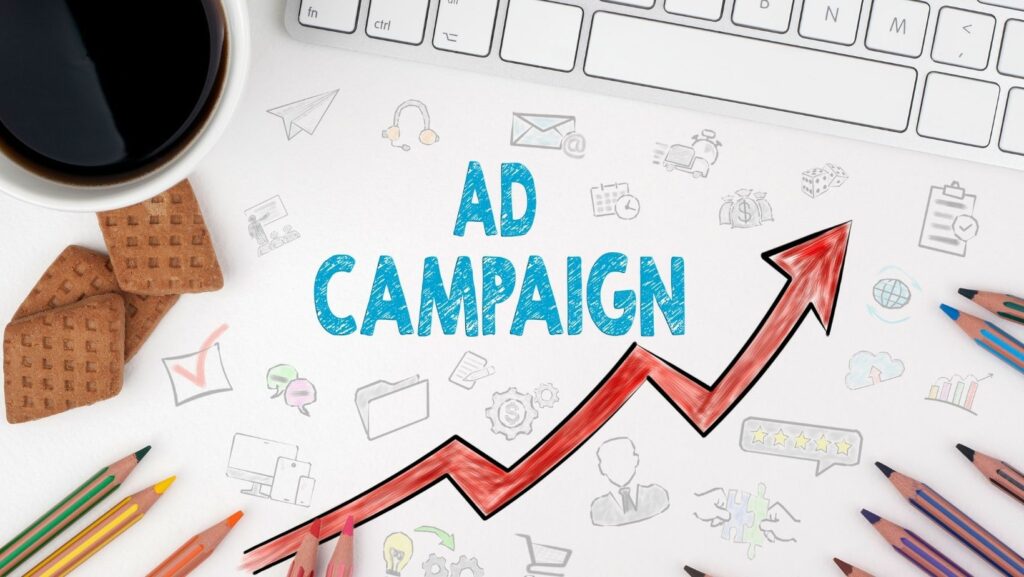
What is Facebook Ads Optimization and Why Does It Matter?
In the hyper-competitive digital arena of 2025, simply running ads on Meta’s powerful suite of platforms is no longer a viable strategy for growth. With millions of businesses vying for the attention of a finite user base, the key to unlocking true potential and achieving a profitable return lies in a dedicated, continuous process of refinement. This process, Facebook ads optimization is the single most critical discipline that separates advertisers who burn through their budget from those who build scalable, revenue-generating engines. It’s a strategic blend of art and science—combining creative testing with data-driven analysis to ensure every dollar is spent with maximum efficiency and impact.
Deconstructing Facebook Ads Optimization
Facebook Ads optimization is the ongoing, systematic process of making adjustments to your advertising campaigns to improve their performance against a specific, predefined goal. It is not a one-time setup or a “set it and forget it” activity. Rather, it’s an active and iterative cycle of testing, learning, and refining every component of your ad campaigns to achieve the best possible results for the lowest possible cost. This is the very core of effective social media advertising.
This process touches every layer of your campaign structure within the Meta Ads Manager, from the highest strategic level down to the most granular detail. A fully optimized campaign involves a holistic look at:
- Campaign Objective: Ensuring you’ve selected the right goal (e.g., conversions, traffic, engagement) to align with Facebook’s powerful machine learning algorithm. The objective you choose dictates how Meta’s delivery system optimizes your ads.
- Audience Targeting: Continuously refining who sees your ads, whether through detailed demographic and interest-based Core Audiences, or powerful Custom Audiences (built from your website visitors or customer lists) and Lookalike Audiences.
- Ad Creatives & Copy: Systematically A/B testing different images, videos, carousel ads, primary text, headlines, and calls-to-action (CTAs) to determine what resonates most powerfully with your target audience.
- Bidding and Budgeting: Strategically managing how much you’re willing to pay for a desired action and how your budget is allocated across different ad sets using tools like Advantage Campaign Budget (formerly CBO).
- Ad Placements: Analyzing where your ads are shown (e.g., Facebook Feed, Instagram Stories, Reels, Messenger, Audience Network) and concentrating your spend on the most effective and profitable locations.
- Conversion Path: Ensuring that the user journey after the click—from the ad to the landing page and through the checkout process—is seamless, relevant, and frictionless to maximize conversion rates.
At its core, Facebook Ads optimization is about working with Meta’s algorithm, not against it. By feeding the system clear data and signals about what constitutes a successful outcome for your business (a “conversion”), you enable its sophisticated machine learning capabilities to find the right people, at the right time, with the right message, all while making the most efficient use of your budget.
The Critical Importance: Why Optimization Matters
In an auction-based environment with millions of active advertisers, optimization is not just a best practice; it’s a requirement for survival and success. Ignoring it leads to wasted spend, diminishing returns, and strategic stagnation. Here’s why a dedicated focus on optimization is paramount for any serious digital marketing effort.
- Maximizes Return on Ad Spend (ROAS): This is the ultimate goal for most advertisers. Optimization directly translates to a better bottom line. By systematically lowering your Cost Per Acquisition (CPA) and increasing your Conversion Rate (CVR), you ensure that every dollar invested generates more revenue, making your campaigns more profitable and scalable.
- Reduces Wasted Budget and Improves Efficiency: Optimization is the antidote to inefficient spending. It helps you identify and cut budget drains—like underperforming ad creatives, poorly targeted audiences, or low-converting placements—and reallocate those funds toward the elements of your campaign that are proven to deliver results. This leads to a lower overall CPA.
- Combats Ad Fatigue: Audiences get tired of seeing the same ad repeatedly. This phenomenon, known as “ad fatigue,” is a real performance killer. It leads to a decline in Click-Through Rates (CTR), a rise in cost-per-result, and negative feedback from users. A consistent optimization process involves refreshing ad creatives and rotating new messages to keep your campaigns fresh, engaging, and effective over the long term.
- Improves Ad Relevance and Quality: Facebook’s ad auction doesn’t just reward the highest bidder; it rewards the advertiser who provides the best user experience. Ads that are deemed highly relevant and engaging receive better “quality rankings.” This leads to preferential treatment in the ad auction, resulting in more impressions, a lower cost-per-click (CPC), and ultimately, a more efficient campaign.
- Unlocks Scalability: You cannot confidently scale a campaign that isn’t optimized. Pouring more money into an inefficient campaign only amplifies the waste. Optimization creates a stable, predictable, and profitable foundation. Once you have a campaign with a consistently strong ROAS, you can begin to increase the budget with confidence, knowing that you are scaling a winning formula.
- Provides a Sustainable Competitive Advantage: Your competitors are bidding for the same eyeballs. The advertiser with the most optimized campaign—the best targeting, most compelling creative, and highest relevance—will win the auction more often and at a lower cost. Effective optimization becomes a significant competitive moat that is difficult for less sophisticated advertisers to overcome.
How to Optimize Your Facebook Ads: A Strategic Framework
Optimization is a methodical process. Here’s a breakdown of the key levers you can pull within Meta Ads Manager to improve your campaign performance.

1. Objective-Level Optimization
It all starts here. Choosing the right campaign objective is the most fundamental optimization you can make. Facebook’s algorithm will optimize delivery based on your choice.
- If you want sales, choose Sales. Facebook will show your ads to people within your audience who are most likely to make a purchase.
- If you want traffic, choose Traffic. Facebook will optimize for clicks, finding people who are most likely to click a link, but not necessarily convert.
- If you want brand awareness, choose Awareness. Facebook will optimize for impressions, showing your ad to as many people as possible. Choosing the wrong objective (e.g., choosing Engagement when you want sales) is a primary reason for poor performance.
2. Audience and Targeting Optimization
Reaching the right person is half the battle.
- Test Broad vs. Layered Interests: Start by testing broader interest targeting and let Facebook’s algorithm find pockets of opportunity. In parallel, test more refined audiences where you layer multiple interests and behaviors to reach a more niche group.
- Leverage Custom Audiences: This is a goldmine. Upload your customer list or create audiences based on website visitors (using the Meta Pixel), video viewers, or people who have engaged with your Instagram profile. Retargeting these warm audiences almost always yields a higher ROAS.
- Master Lookalike Audiences: Once you have a strong Custom Audience (e.g., a list of your best customers), create a Lookalike Audience. Facebook will analyze the common traits of the people in your source audience and find millions of new, similar users. Test different percentage levels (1%, 1-3%, 3-5%) to find the right balance between reach and relevance.
3. Creative and Ad Copy Optimization
Your ad creative does the heavy lifting in capturing attention.
- A/B Test Ad Formats: Don’t assume a single image is best. Systematically test static images vs. video ads vs. carousel ads. Video, particularly in vertical formats for Reels and Stories, is often a top performer.
- Test Creative Variables: Within a format, test different visuals. Test lifestyle images vs. product-focused images. Test user-generated content (UGC) vs. polished studio creative.
- Optimize Your Copy: Test different hooks in the first line of your primary text. Test long-form copy vs. short-form copy. Test different headlines and CTAs (“Shop Now” vs. “Learn More” vs. “Get Offer”).
Key Levers for Facebook Ads Optimization
| Optimization Lever | Key Actions to Take | Expected Performance Impact |
| Campaign Objective | Select the objective that matches your ultimate business goal (e.g., use ‘Sales’ for e-commerce conversions). | Aligns Facebook’s algorithm with your goal, significantly improving the likelihood of achieving desired results (e.g., lower CPA). |
| Audience Targeting | Create and test Lookalike Audiences from high-value sources (e.g., purchasers). Test broad vs. niche interest layering. | Increases reach to new, highly relevant users. Can dramatically lower CPA and increase Conversion Rate. |
| Ad Creative | A/B test different ad formats (Video, Carousel, Image). Test User-Generated Content (UGC) against studio creative. | Identifies the most engaging and persuasive creative, leading to higher CTR, better relevance scores, and lower CPC. |
| Budget & Bidding | Test Advantage Campaign Budget (CBO) to let Facebook allocate spend. Experiment with bid strategies (e.g., Cost Per Result Goal). | Improves budget efficiency by automatically shifting spend to the best-performing ad sets and audiences. Provides more cost stability. |
| Ad Placements | Start with Automatic Placements, then analyze the performance breakdown. Manually select only the top-performing placements if necessary. | Maximizes reach initially, then focuses budget on the most profitable platforms (e.g., Instagram Stories, Facebook Feed), improving ROAS. |
| Conversion Path | Ensure landing page message matches the ad. Optimize page load speed (sub-2 seconds). Simplify forms and checkout process. | Reduces bounce rate and friction, leading to a significantly higher on-site Conversion Rate. Increases the value of every click. |
E-Tablolar’a aktar
4. Budget and Bid Strategy Optimization
- Advantage Campaign Budget (CBO): For most campaigns, using CBO is recommended. You set one central campaign budget, and Facebook automatically distributes it in real-time to the ad sets and ads that are getting the best results. This is more efficient than manually allocating fixed budgets.
- Bid Strategy: While “Highest Volume” (formerly Lowest Cost) is the default, consider testing a “Cost Per Result Goal.” This tells Facebook to aim for a specific average CPA, which can provide more predictability in your costs, though it may limit delivery if your goal is set too low.
5. Placement Optimization
- Start with Automatic Placements: This is Facebook’s recommendation. Let your campaign run across all eligible placements initially. This gives the algorithm maximum flexibility to find the lowest-cost opportunities.
- Analyze and Refine: After a week or so, use the “Breakdown” feature to view performance by platform and placement. If you see that certain placements (e.g., Audience Network) are spending money with zero conversions, you can choose to manually edit your placements to exclude them and focus your budget on proven winners like Instagram Reels or Facebook Feed.
6. Conversion Path Optimization (The Post-Click Experience)
Your optimization efforts cannot stop at the click. A seamless landing page experience is crucial.
- Message Match: The headline, offer, and imagery on your landing page must directly match what was promised in the ad. A disconnect here is a primary cause of high bounce rates.
- Page Load Speed: In the age of mobile-first Browse, your page must load in under 3 seconds. A slow page will kill your conversion rate before a user ever sees your offer.
- Frictionless Design: Is your landing page mobile-friendly? Is the CTA button clearly visible? Is your checkout or lead form short and easy to complete? Remove every possible point of friction.
By methodically working through these six levers, you create a powerful feedback loop. You test a hypothesis, analyze the data, implement the winning variation, and then formulate a new hypothesis to test. This is the engine of relentless, effective optimization.



